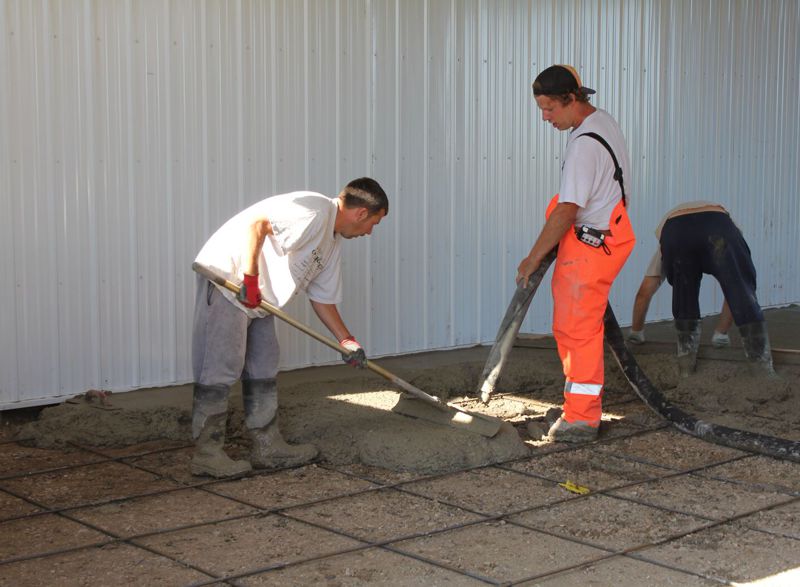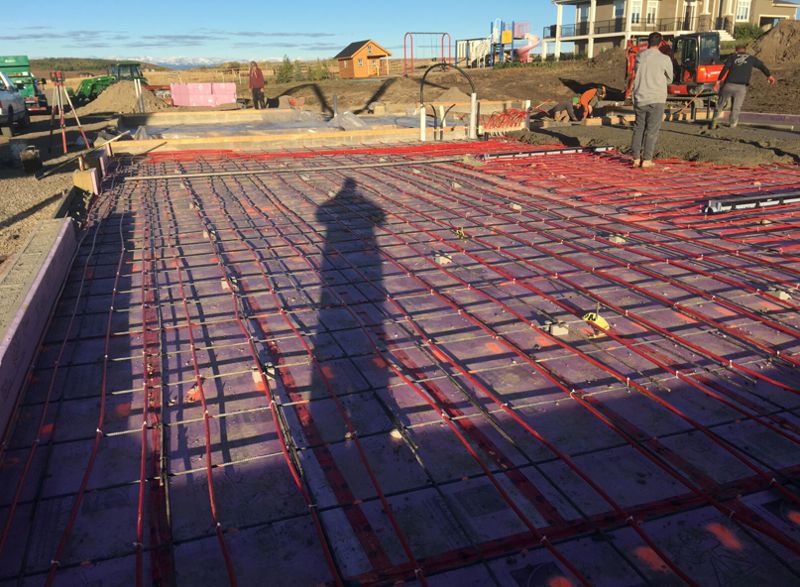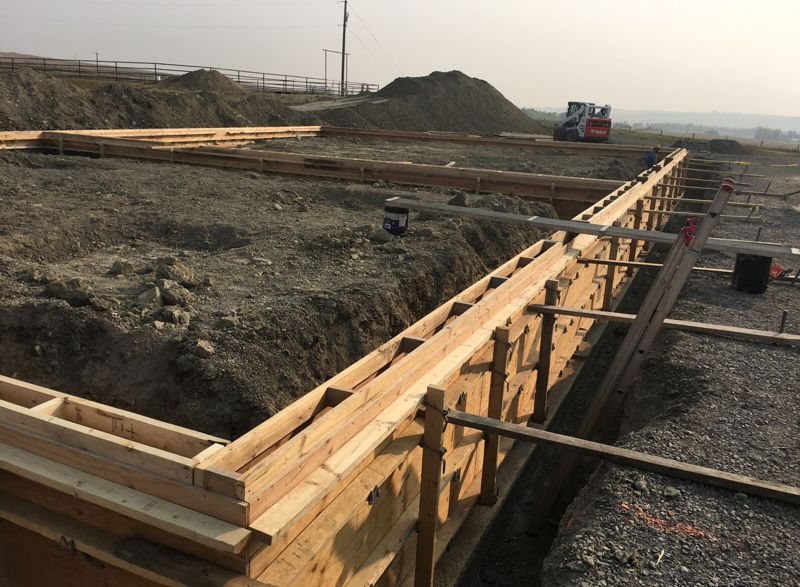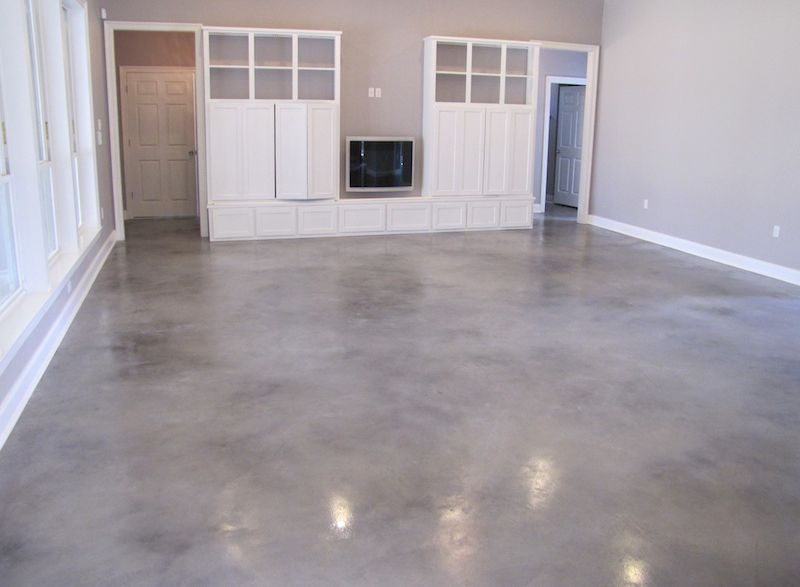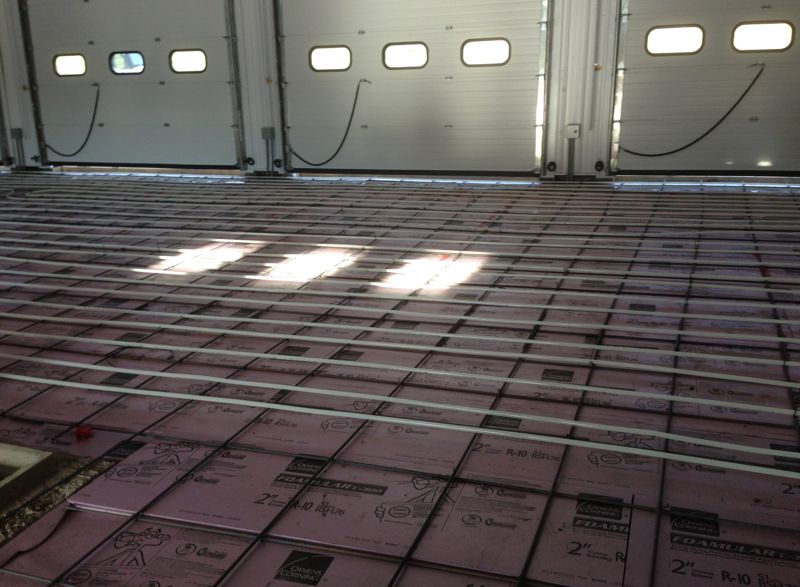Concrete Shop Floors Okotoks
Construction of Garage Floor Slab
1. Preparation of Base
It's important to have solid and level base for placing the shop floor slab. The uneven or loose base will make the slab deflect. If the base soil is to be filled, then proper compaction must be insured to avoid uneven settlement.
It is good to have a 4-6" crushed aggregate base on the soil on which the reinforcement can be placed. A 6-inch-thick slab weighs only about 75 psf, and live loads(vehicles) don't exceed 50 psf in a shop. Total max loads coming on the shop slab is 125psf. Even a low standard soil such as silt or clay easily supports 400psf.
Thickness of Garage Floor Slab
The thickness of the shop floor slab depends on many factors such as types of loads coming upon the slab, rebar spacing and climatic condition.
Standard thickness of the shop floor slab used is 4 inches. Depending upon the type load coming upon the slab, the thickness is increased.
- Light Loads – For light cars or trucks, the concrete should be at least four inches thick.
- Medium Loads – If the shop is used for larger vehicles and/or medium to heavy equipment or trucks, the concrete needs to be six inches thick.
- Heavy Loads – If your shop floor is going to see constant traffic from heavy vehicles, it is recommended to increase the thickness to a commercial specification which is six to eight inches thick.
Placement of Reinforcement
10mm reinforcement steel (rebar) in the floor slab is added to hold the slab in position and avoid help minimize cracks. Standard rebar spacing is 24" O/C however, optional spacing of 18", 16", & 12" can also be requested. Typically tighter the rebar spacing results in less cracking.
Underslab Insulation
2" rigid foam insulation is code required for all in-slab heating applications. With an R-value of 12.4 this helps reduce future heating costs as heat contained within the slab is not lost through the substrate.
Control Joints
Typically control joints in a shop floor are cut into the slab after the first 24-48 hrs of the floor being poured. Control joints are used in slabs-on-ground to minimize random cracking. By creating straight-line weakened-planes in concrete, contraction joints "control" the cracking location by inducing cracks at predetermined locations. Joints are spaced using a standard 2-3 times slab thickness (inches) into feet. For example a 4" slab will have joints cut between 8'-12' apart.


